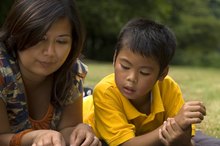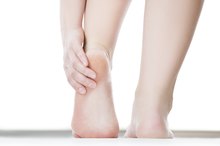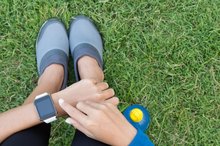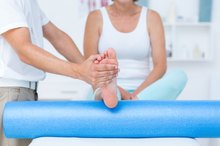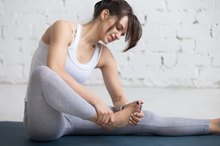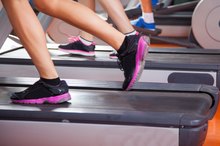What does fact checked mean?
At Healthfully, we strive to deliver objective content that is accurate and up-to-date. Our team periodically reviews articles in order to ensure content quality. The sources cited below consist of evidence from peer-reviewed journals, prominent medical organizations, academic associations, and government data.
- National Center for Biotechnology Information: Upper Extremity Proprioceptive Training, Stone, et. al
- National Center for Biotechnology Information: Upper Extremity Proprioceptive Training, Stone, et. al
The information contained on this site is for informational purposes only, and should not be used as a substitute for the advice of a professional health care provider. Please check with the appropriate physician regarding health questions and concerns. Although we strive to deliver accurate and up-to-date information, no guarantee to that effect is made.
Rehabilitation Exercises for Proprioceptors
Propriception is defined as the ability to know where your body is in space. Proprioception has two practical extensions in functional activities 1. Being able to identify the position of your arm is an aspect of propricetion often affected by stroke or traumatic brain injury. Loss of balance related to impaired proprioception in the ankle can result from stroke or ankle injuries such as a sprain or muscle rupture 1. Your therapist will use exercises in your rehabilitation to help reduce the effects off your proprioceptive deficits.
Arm Location Identification
When you have had damage to your brain or nerves, your ability to identify the location of your affected arm or hand can be drastically impaired. Your occupational therapist will assess your proprioception by having you match the location of one arm with the other arm while your eyes are closed 1. To restore your upper limb proprioception, your OT will have you perform a variety of arm movements while watching your arm 1. This will help to rebuild and reinforce your neural pathways and increase your sensation and body awareness. Your OT may also instruct you to make a fist, bend your elbow or lift your arm without watching to determine if you are progressing.
- When you have had damage to your brain or nerves, your ability to identify the location of your affected arm or hand can be drastically impaired.
- Your occupational therapist will assess your proprioception by having you match the location of one arm with the other arm while your eyes are closed 1.
Standing Exercises
Visual Perception Problems in Children
Learn More
While standing, you can improve you basic proprioception in your ankle 1. Your physical therapist will instruct you to stand on one foot with your eyes open and endeavor to keep your balance. When you can complete a one-legged stand, your PT will have you try to keep your balance with both feet on the floor and eye closed. Then, while you eyes are closed and both feet are on the floor, your PT will push against your trunk in multiple directions to strengthen your propriceptive reactions. The hardest activity at this level is to stand on one foot with your eyes closed.
- While standing, you can improve you basic proprioception in your ankle 1.
- When you can complete a one-legged stand, your PT will have you try to keep your balance with both feet on the floor and eye closed.
Compliant Surfaces
Once you are competent on a flat stable floor surface, your PT will replicate the series of standing exercises on more compliant surfaces. A foam pad, an air-filled flat bladder or an inflated rubber hemisphere will be placed underneath you while you are standing or performing standing exercises. By standing on increasingly unstable surfaces, your proprioception will continue to to be challenged and will begin to improve 1.
Dynamic Standing
Eye Exercises for Esotropia
Learn More
As your ankle proprioception advances, you can initiate dynamic standing exercises often used in yoga or Pilates routines 1. Place one foot on the floor and lift your other foot straight behind you and bend your trunk forward until your trunk and lifted leg are parallel to the floor. Increase your time in this position up to two minutes. Challenge your proprioception by standing in a plie pose with one foot placed on the knee of your standing leg with the bent knee rotated outward 1.
Related Articles
References
- Belltina: Proprioception - Definition
- National Center for Biotechnology Information: Upper Extremity Proprioceptive Training, Stone, et. al
- Han J, Waddington G, Adams R, Anson J, Liu Y. Assessing proprioception: A critical review of methods. J Sport Health Sci. 2016;5(1):80–90. doi:10.1016/j.jshs.2014.10.004
- Aman JE, Elangovan N, Yeh IL, Konczak J. The effectiveness of proprioceptive training for improving motor function: a systematic review. Front Hum Neurosci. 2015;8:1075. doi:10.3389/fnhum.2014.01075
Writer Bio
Melissa Sabo is an occupational therapist who started writing professional guidebooks for all Flagship Rehabilitation employees in 2009. Specializing in applied therapy and exercise for non-medical readers, she also coauthored a manual on wheelchair positioning. She graduated from the University of Pittsburgh with a Bachelor of Science in occupational therapy.
